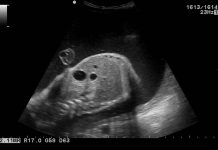Candida is a fungus found in the body in small amounts. This fungus lives in warm, wet places like the mouth, skin, vagina and bowels. Candida is harmless in small amounts. But it can be severe if the fungus grows and spreads in bloodstream. That can cause septicemia in babies leading to death. Candida can cause common infections like oral thrush, yeast infections in the groin area. This fungus can affect the eyes, fingernails and the area in the neck and armpits.
Newborn babies also acquire Candida infections from their mothers. Premature babies of low weight are especially vulnerable to this kind of infections. There are various symptoms of Candida infections in infants like rashes in the groin region or in other places, white sores in the mouth and such. Candida infection can be risky if it is not cured in time and the infection spreads in the blood. There are ways to prevent these infections.
Read More: 11 Common Neonatal Infections New Moms Should Know
Cause of Candida infection:
- A small amount of Candida fungus lives in the mouth. But when the fungus grows, it can cause sores and lesions. It usually occurs if the immunity of the baby is low. It can also happen after treatment with antibiotics. This is because antibiotics lower the good bacteria in the mouth that fights infections.
- Vaginal yeast infections occur mostly because of your baby staying wet for long time. Candida grows in warm, moist places like the wet groin area. This mainly causes rashes in the groin area of your baby.
Read More: Home Remedies to Treat Ear Infection in Kids
Symptoms
Oral thrush
- You may notice white patches on the tongue, cheek or roof of your baby’s mouth. These patches might be painful.
- These lesions may bleed easily. You might see redness around the patches.
- The patches may look like milk but cannot be wiped away.
- You may also notice cracks at the corners of your baby’s mouth.
- Oral thrush can also spread to the esophagus. This can cause pain during swallowing of food. If you have difficulty feeding your baby, it can mean he is feeling pain while swallowing. This is not to be neglected.
If you notice the above mentioned symptoms in your baby, it means your little one has oral thrush. It can be treated easily if diagnosed early. Without proper treatment, the sores may increase in size as well as number. Therefore, immediately consult a doctor if your baby shows any of these signs.
Read More: 11 Proven Essential Oils for Ear Infection in kids
Yeast infection in groin
- If your baby already has diaper rash, yeast infection can make it severe. You will notice reddening of the area.
- There may be raised borders around the rashes. This is a sure sign of yeast infection.
- If your baby’s diaper rash lasts longer than two days and is unresponsive to healing creams, it is yeast infection. Mild yeast infection is very similar to diaper rash symptoms. But a fully developed yeast infection is more defined.
- The rashes are very red and severe looking.
- The rashes may appear like scales. This is a typical symptom of yeast infection.
- In yeast infections, rashes typically occur in the skin of the groin area. A wet groin is more likely to catch yeast infections in your little one.
- Yeast infections can cause severe irritation around the diaper rashes of your baby.These are satellite lesions which cause irritation around the main rash in the skin.
Once your baby starts demonstrating any of these signs, it can surely indicate yeast infection. Yeast infections may cause severe harm to your baby if not treated properly. So, you must check with your physician if the infection do not cease even after three days.
Risk
Candida infections are not usually severe. They can be generally treated at home even with a few effective natural remedies. But in some rare cases, the infection spreads to the bloodstream. It happens in premature babies with low birth weight. Also toddlers with very low immunity are vulnerable. Babies who have IV’s and catheters in their body for a long time can also catch yeast infections. If the infection spreads to the baby’s blood, it can severely affect all the organs and may even cause death.
Prevention
- To prevent yeast infection in the genitals of your baby, you must change the diaper frequently.
- Do not let your baby stay in soiled diapers for a long time. Wet places are more likely to catch yeast infections.
- You should clean your baby’s bottoms after every time he urinates or passes stool. Take care to clean the place thoroughly. Keep the area open to dry naturally. Then apply a fresh clean diaper.
- Do not tie the diaper very tightly. This will prevent air circulation and give rise to yeasts.
- Getting fresh air is important to prevent infections. Leave your baby bare on some plastic tablecloth or waterproof sheet. You can cover him with a towel. This will pass fresh air to the genitals of your little one and effectively prevent Candida infections.
- Antibiotics actually do more harm than good to your baby; they kill the good bacteria in the mouth that fights infection. So avoid giving antibiotics to your little one unless it’s absolutely necessary.
- You should clean and sterilize the pacifier your baby uses. This can also prevent oral yeast infections.
- Dry your nipples between every bout of breastfeeding. This is also an useful way to prevent oral thrush.
However Candida infections cannot be easily prevented if your baby is already on antibiotics. A previous occurrence of yeast infection will also make preventing a second attack difficult.
Conclusion
Candida infections are common in neonates. They are usually curable with proper medication and care. Even natural remedies can work for healing this kind of infections. You must look out for the symptoms in your baby. Though it is harmless, sometimes yeast infections can cause serious problems. You should consult with your baby’s doctor if you see the symptoms persisting for a long time.
Reference
https://www.healthline.com/health/parenting/toddler-yeast-infection#complications
https://www.medscape.com/viewarticle/463781_1













